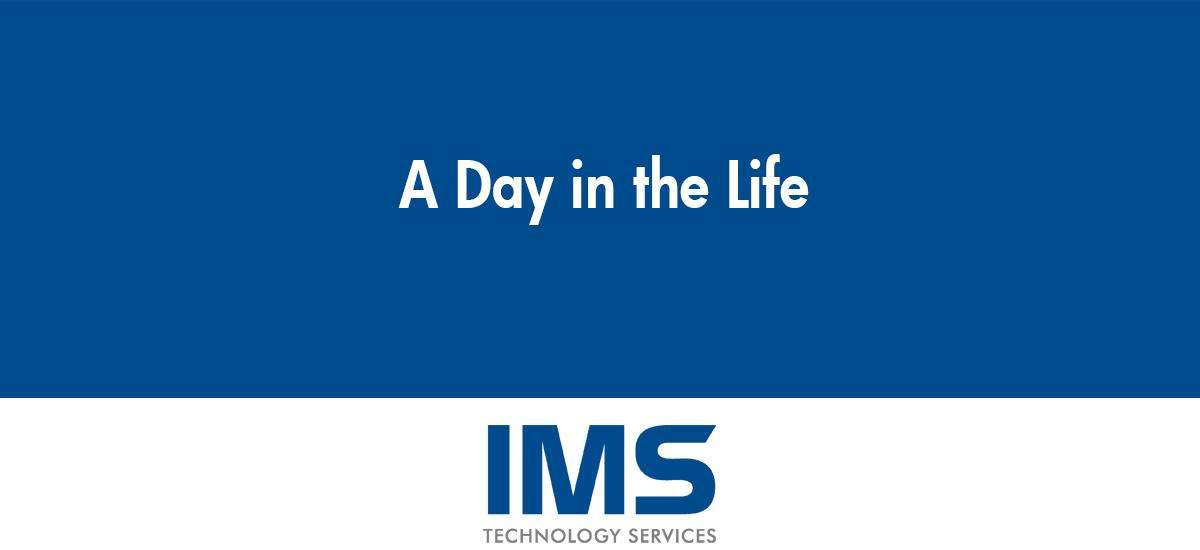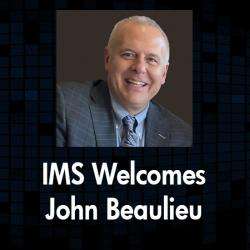Day in the Life of a National Account Manager

This is the third installment of a new series of "Day in the Life" articles featuring IMS team members and how they spend their day on the road supporting our clients. This is the recent "day in the life" of Greg Kamprath, National Account Manager.

“Suppose for a second I can help you with all of the things we just talked about. Reducing stress on-site, improving the attendee experience and providing consistent pricing/staffing from location to location. I’m sure that will be good for the organization. What will it mean to you personally?”
My day has started with a site visit to a meeting venue. I’ve been talking through the program with a prospective client. Before the meeting I’ve done my research on the organization and this same event from last year. I looked up pictures on Facebook and twitter. All of the specific technical questions we’re covering are important. But in these client interviews, asking open ended “who / what / where / how” type questions uncovers valuable information about their goals and objectives, and what really matters to my contact. It helps us generate suggestions that may not have occurred to an event owner. Based on these conversations it’s actually not unheard of for our team to come up with suggestions that result in a smaller bill, but a happier (and repeat) customer.
In many cases, I have one of our production managers along for the conversation. In this case, I meet up with the team afterwards to convey the vision for the event. With sufficiently large events this might involve the director of audio, director of video, director of lighting and so on to spec gear for their respective disciplines. For today, the production manager and I have a less formal conversation. He will spec the gear. The creative team will generate renderings to show what the set will look like, and how much space AV will take up. We agree on deadlines and any check-in calls.
I’ve blocked some time between meetings to prospect: to find more people who might benefit from our expertise. I start to build a list of people to reach out to. I think of our repeat happy clients – what industries are they in? What sort of events do they have? What services have we provided? Then I build a list of similar organizations. Once I do that, I think of the contacts for our repeat clients. What are their titles? How did we come to connect with them? I start building a list of people with similar titles at the target organizations, using the company website, social media and web searches. In some cases their contact information is on the official website, in others I use my internet detective skills to find email and phone numbers.
When I reach out to potential clients it’s important to be respectful of their time – if I can’t approach someone with a clear and brief message, why would they have reason to think it would be any different when we’re actually working together? So I try to boil it down to an “initial benefit statement”. What are the benefits of working with IMS for our clients? There’s a temptation to talk about features – “We have this piece of gear with this amazing capability” – but ultimately why should the person I’m talking to care? Because it saves them time. Because it makes them look good to their boss. Because it reduces risk, and lets them focus on their responsibilities instead of having to keep an eye on a subpar AV supplier. So I focus on how the benefit to the client.
What’s more, what matters to one person may not be important to another. A meeting planner may find time savings on-site more valuable. A director of sales may care that attendees at the national sales meeting go back home motivated and ready to close deals. When I reach out, I want to have something of real value to suggest as a reason why a client would want to work with us. Once I have that, then I start making calls and sending emails.
Next on the schedule, I need to finalize putting together a proposal. There is the scope of work: a plain English description of what is included in the quote. While a detailed line item quote is important, for the average client they will not recognize (or need to recognize) all the pieces of equipment. The scope provides an overview of the key points and how we plan to achieve their goals. The proposal incorporates renderings of the event, and a ground plan showing how floor space is used. It includes references from similar clients, and answers a variety of questions the client listed in their RFP. It includes an executive price summary tying together costs from multiple quotes for different facets of the event. Due to this being a particularly large even, the summary also shows costs not incurred from IMS, but which the client will want to know about: venue rigging, internet, union labor. Normally a proposal might be a few pages, but the one I worked on today was 89(!) pages.
I head out again to a client’s office and we make a presentation in their boardroom. In terms of prep, before we create a slideshow we find out who is going to be in the meeting, and what their role as a stakeholder is. We try to find out what will be most valuable for them to take away from the presentation – some folks want to see specs, and ask specific detailed questions. Others want to see the big picture or talk vision. Once we have an understanding of what is important to cover, we create a custom presentation covering those points. We also identify who is handling what – often I’m covering a majority with a production manager jumping in on technical details. The planning pays off and our presentation generates some great conversation. The organization’s staff are talking amongst themselves and with our team coming up with ideas to expand on our proposal. We thank them for investing time with us and head out.
Lastly I drive over to a venue where our team has been setting up an event for several hours. I check in with our staff to see how things are going. Then I find the client and check in. “How is everything?” She gives me a hug and says, “Everything is amazing!”
Share This Article
Categories
Latest Posts

Philadelphia 2026: Is Your Venue Ready for the Spotlight?

Scalable AV Infrastructure for Life Science Enterprises

Extend Your Reach: The Power of Virtual and Hybrid Events

Why Every Detail Matters in Investor and Year-End Meetings

IMS Technology Services Welcomes John Beaulieu
Tags
Contact Us
- Headquarters: 3055 MCCANN FARM DRIVE, GARNET VALLEY, PA 19060
- Event Staging: 2000 COLUMBIA AVENUE, SUITE 300, LINWOOD, PA 19061
- Southeast Office: 404 SUNPORT LANE, SUITE 350, ORLANDO, FL 32809
- Phone: + 610-361-1870
- Contact Us
Services
Recent Posts

Philadelphia 2026: Is Your Venue Ready for the Spotlight?

